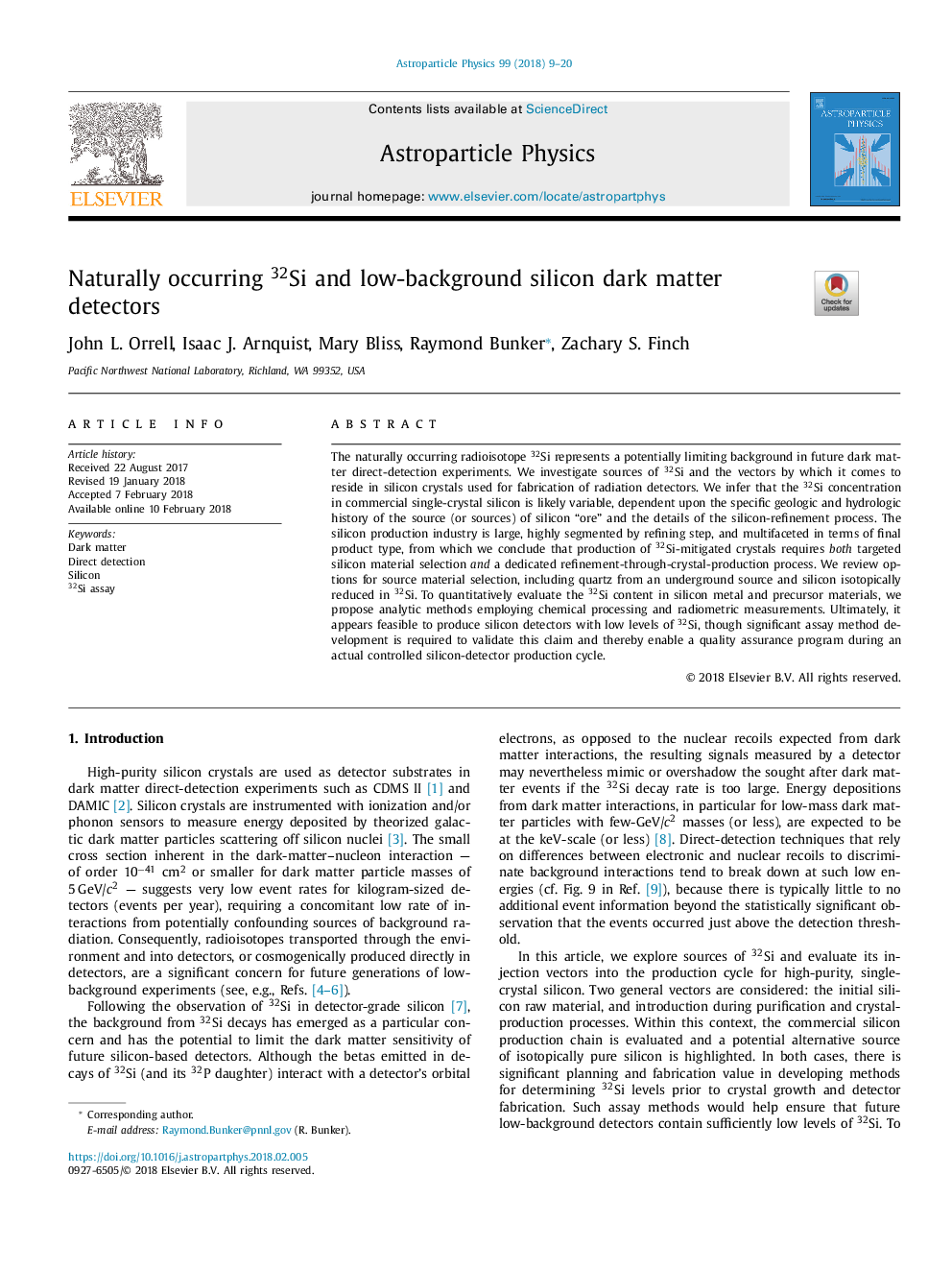| Article ID | Journal | Published Year | Pages | File Type |
|---|---|---|---|---|
| 8132709 | Astroparticle Physics | 2018 | 12 Pages |
Abstract
The naturally occurring radioisotope 32Si represents a potentially limiting background in future dark matter direct-detection experiments. We investigate sources of 32Si and the vectors by which it comes to reside in silicon crystals used for fabrication of radiation detectors. We infer that the 32Si concentration in commercial single-crystal silicon is likely variable, dependent upon the specific geologic and hydrologic history of the source (or sources) of silicon “ore” and the details of the silicon-refinement process. The silicon production industry is large, highly segmented by refining step, and multifaceted in terms of final product type, from which we conclude that production of 32Si-mitigated crystals requires both targeted silicon material selection and a dedicated refinement-through-crystal-production process. We review options for source material selection, including quartz from an underground source and silicon isotopically reduced in 32Si. To quantitatively evaluate the 32Si content in silicon metal and precursor materials, we propose analytic methods employing chemical processing and radiometric measurements. Ultimately, it appears feasible to produce silicon detectors with low levels of 32Si, though significant assay method development is required to validate this claim and thereby enable a quality assurance program during an actual controlled silicon-detector production cycle.
Keywords
Related Topics
Physical Sciences and Engineering
Physics and Astronomy
Astronomy and Astrophysics
Authors
John L. Orrell, Isaac J. Arnquist, Mary Bliss, Raymond Bunker, Zachary S. Finch,
